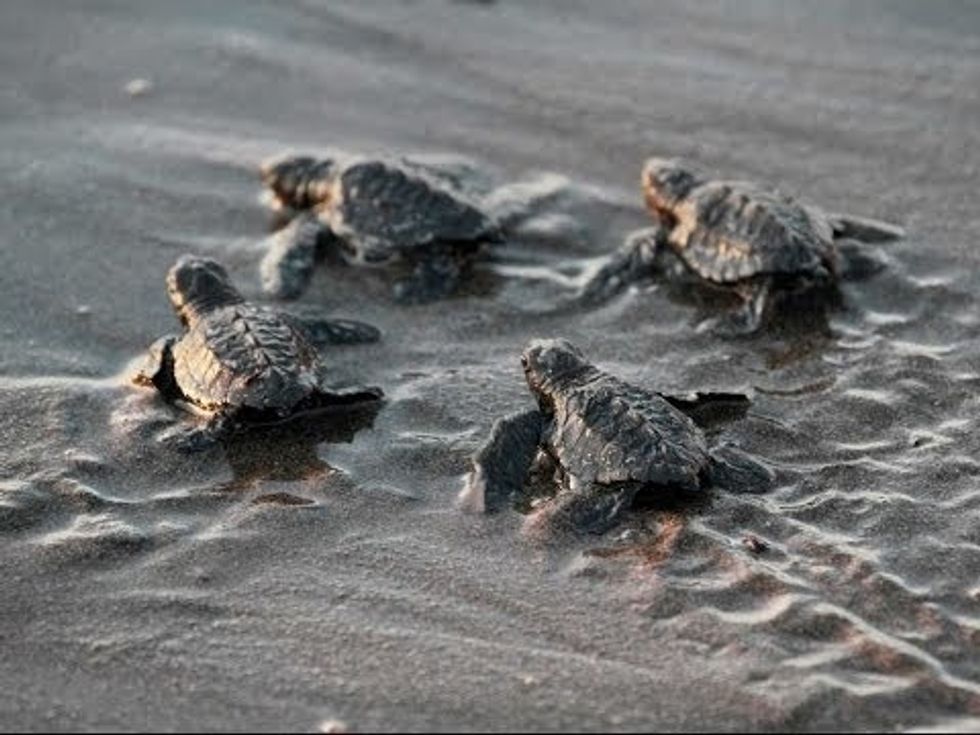If you're headed south to the beach this summer, you might run into a few (hundred) extra visitors. Summer has officially begun, meaning that the time for sea turtles to head to shore and hatch their babies is in full swing! However, this natural phenomenon does not need to impact your time in the sun. Here is what you need to know.
According to National Geographic, some species of sea turtles nest every two years and about 3-5 times per season. At these times, the female turtle will go ashore, often the same shore at which they themselves were born, and make a nest in the local dunes to lay her eggs before returning to the water. They lay about 100-200 eggs at a time to improve the odds of survival, and the eggs incubate for about two months.
The whole nesting experience is the most dangerous time in a turtle's life, for both the mother and the babies. The mother, often weighing around 250 lbs, has to make her way up the beach and into the dunes without falling into holes in the sand or distractions from porch lights. The eggs must be secure enough to avoid predation by birds and other creatures, and when hatched, make it to the tide while battling darkness, light distractions, and more predators.
As you can imagine, the whole process is a lot for the endangered species to go through. So, what happens if you find yourself lucky enough to witness a sea turtle hatching? What can YOU do to help?
For starters, sea turtles often hatch at night and use the light of the moon to direct themselves to the ocean. Therefore, any light from nearby houses or flashlights could distract them and prevent them from reaching the water. Sea Turtle Protection Programs urge residents to turn off their porch lights during a nesting period and condemn the use of flashlights in the event that a hatching occurs (unless used by certified patrols to redirect the wayward turtles). Furthermore, the baby turtles listen for the sounds of the waves to help navigate themselves to safety in the water, so it is important to remain quiet while the babies make their journey.
When my family saw a nest hatch on a beach in North Carolina, the designated Turtle Watch organization had us build sand barriers to keep the babies on track. If one strayed, which a couple did, we had to build around the turtle without touching it to redirect it. It was a very stressful process, but one that is so important to nature and worth it to save them.
Even if you are not lucky enough to see a hatching in person, you can still help these beautiful creatures during the nesting season by turning off the porch lights at night and filling in any holes in the sand. Most importantly, listen to the protection agencies and certified volunteers that are there to monitor the turtle nests. It takes cooperation to ensure that the turtles make it safely to their home and start their journey, and one day come back to the beach to have their own nests to help grow the endangered population.


















